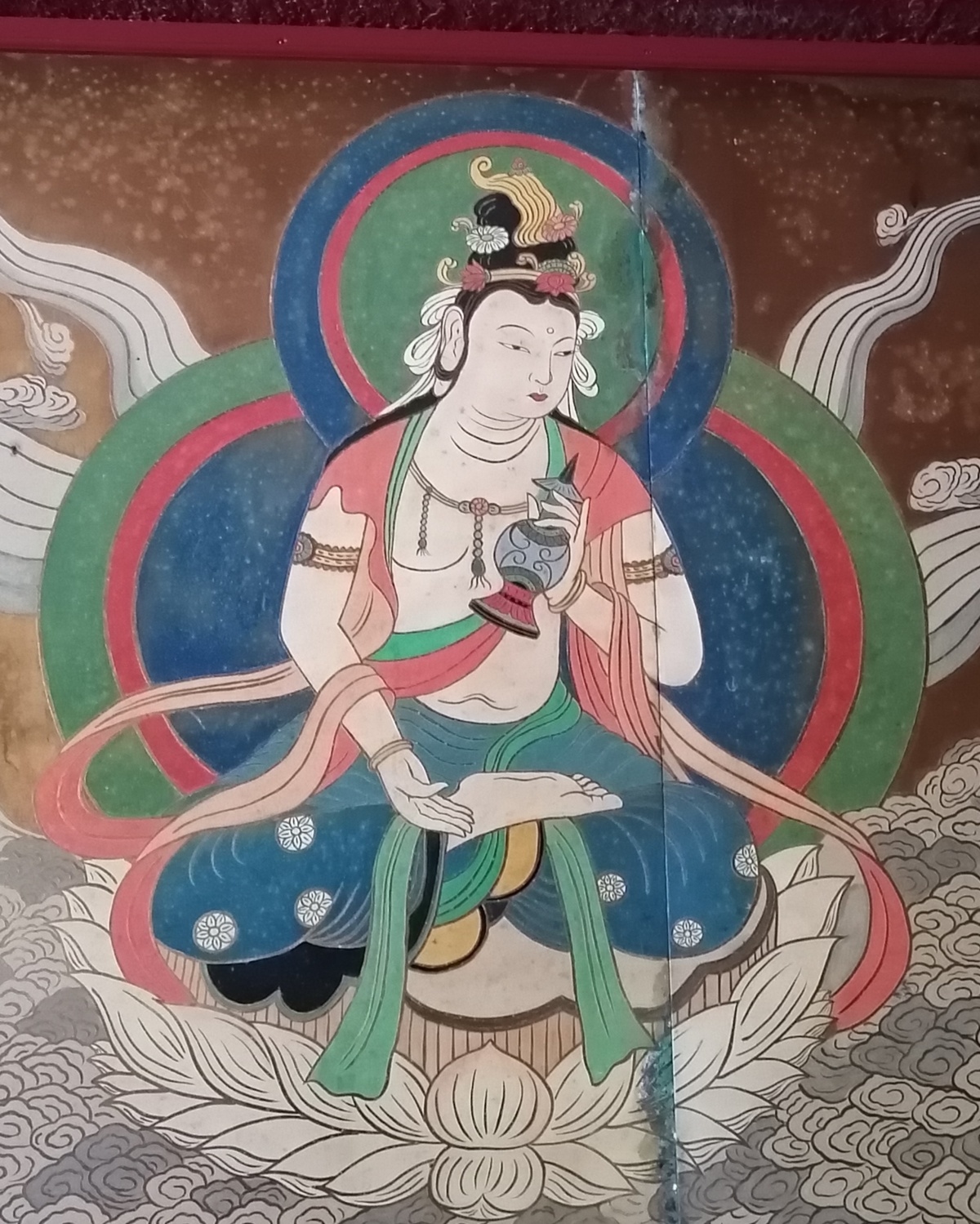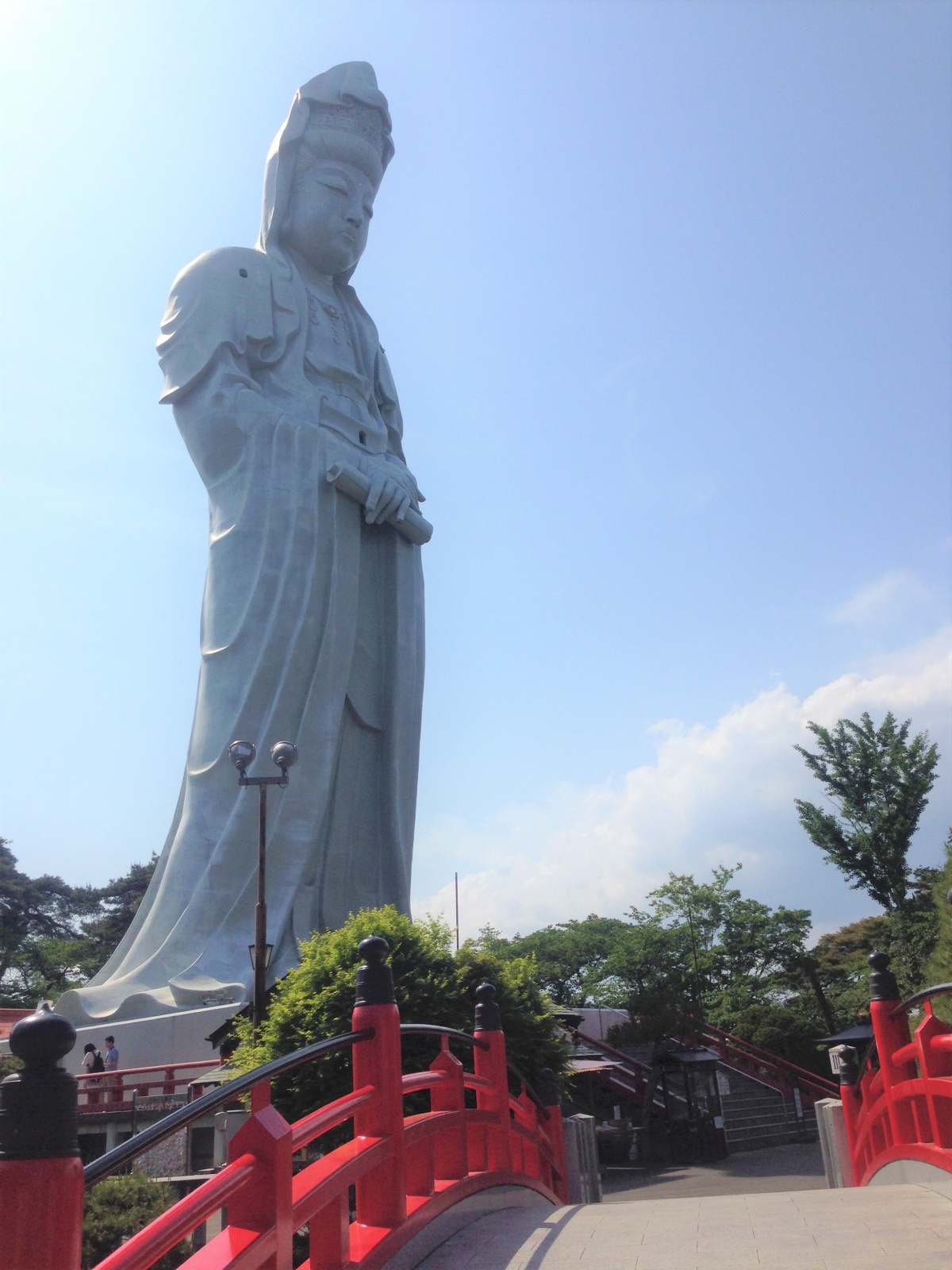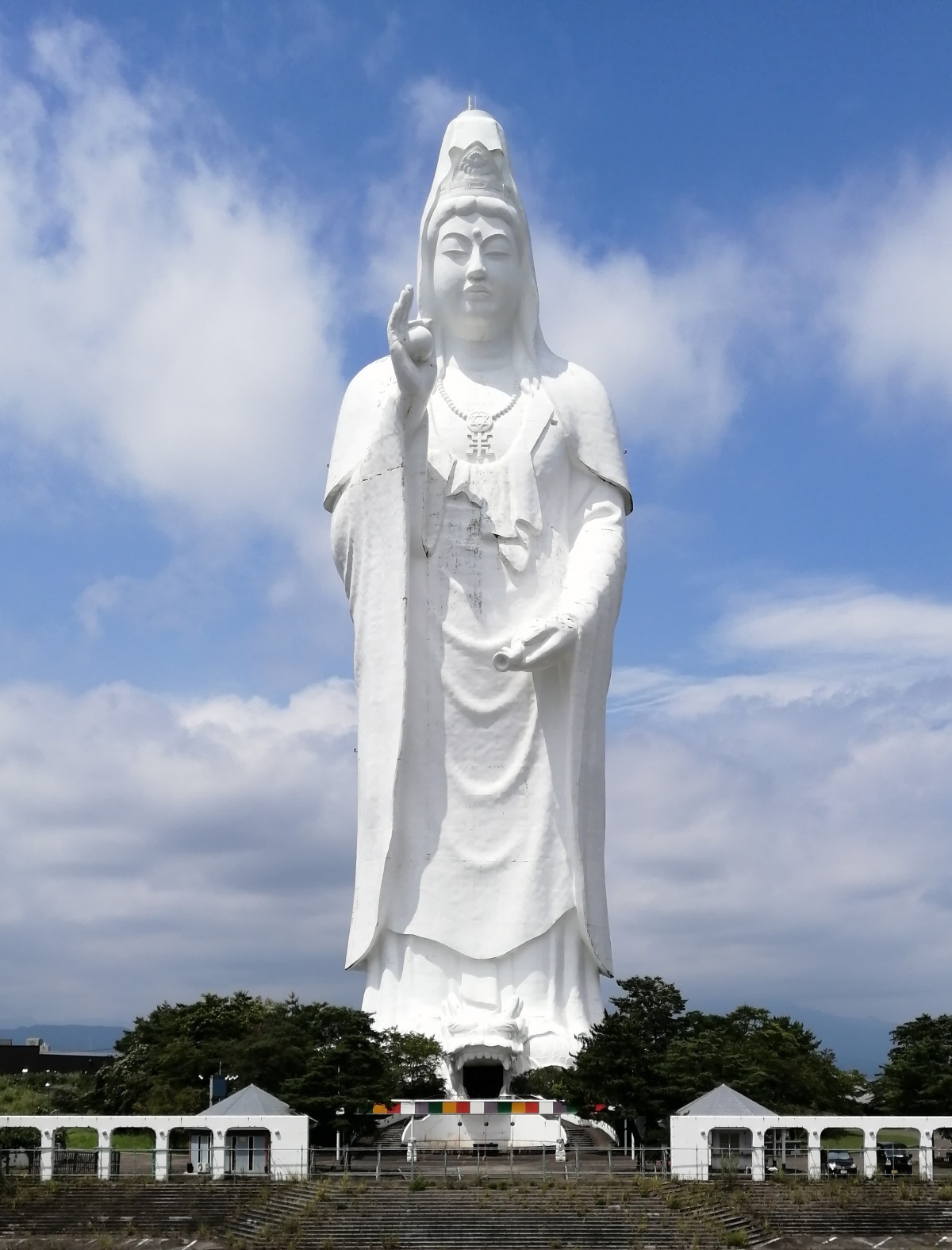Getting to Know Japan's Daikannon

Japan is home to some great statues, the most renowned of which are perhaps the Three Great Buddhas of Kamakura, Gifu, and Nara. The tallest statue in Japan, the Ushiku Daibutsu, also represents Buddha. While these statues deserve recognition and attention, there is another deity who has been immortalized in some impressive statues; Kannon.
By Neal BeaverWho is Kannon?

The bodhisattva Kannon (known in Chinese as Guanyin and Avalokitesvara in Sanskrit) is a common sight at Japanese temple grounds. Kannon is the bodhisattva associated with compassion, and Jesuit missionaries dubbed her “The Goddess of Mercy.” A bodhisattva is a being who is capable of Nirvana but chooses to abstain from enlightenment through compassion for the sufferings of others. There are many different aspects of Kannon, both physically and in terms of spiritual representation.
Byakue Daikannon - Takasaki (Gunma Prefecture)

Built in 1936 by a local businessman, this Byakue (White-Robed) Daikannon statue is the pride of the people of Takasaki, along with its daruma dolls, for which Takasaki is nationally known. The statue is the first stop on a pilgrimage of 88 holy sites in the Kanto region 88 Holy Grounds pilgrimage route, which runs through the Kanto prefectures. The statue stands about 42 meters tall (about 138 feet), and the inside is divided into nine levels, with stairs that reach up to the statue's shoulders—the top offers a lovely view of the surrounding city. The park surrounding the statue is especially lovely in spring, thanks to cherry blossoms, and in fall, thanks to the colorful foliage. It costs ¥300 to enter.
Access
Take the Gurin Bus from Platform 8 at Takasaki Station. It takes about 20 minutes one-way.
Usami Kannon - Usami (Shizuoka Prefecture)

If you want off the beaten track, this is a great place to do it! Be warned, however, that Japan’s largest sitting Kannon has extremely limited opening days. But with a stunning and unique temple complex overlooking the sea, and a beautiful seated Kannon waiting, it is well worth the trip!
It takes about two hours from Shinjuku Station to Usami Station, which can be found on the eastern side of the Izu Peninsula. There are no buses to the temple, so a taxi is your best bet. If there is no taxi at the station, there is a taxi station a short walk up the main thoroughfare from the station. Walking is possible, but requires an hour-long trek each way. You’ll pass shuttered mikan (basically Japanese tangerines) shops on the roadside, once brightly covered and plastered in signs, suggesting they used to be the pride of the area. As you get closer, the Kannon’s head will sink into the canopies; the next time you see her, she will be towering over you, at a height of 50 meters (about 164 feet). The complex costs ¥500 to enter. If being open only once a week wasn’t quirky enough, the first thing you’ll see when you arrive is a ship called the Anmaru, which has been refurbished as a family restaurant. Inside the temple, you’ll find the Seven Lucky Gods, hundreds of statues (including some from Tibet and Nepal), and various satellite temple buildings. The top of the complex offers a lovely view of the ocean and surroundings.
Access
From Usami Station, it is about an hour-long walk or a 15 minute taxi ride.
Sendai Daikannon - Sendai (Miyagi Prefecture)

The Sendai Daikannon was built for the 100th anniversary of the foundation of the city of Sendai. She is known as Nyoirin Kannon, or "wish-granting Kannon," because of the wishing gem she holds in her right hand. This gem manifests any desires and alleviates any hardship, supposedly a metaphor for the teachings of Buddha. In her left hand she carries the mizugame, a water jar that holds water of wisdom, and is one of the eight symbols of good fortune. At 100 meters (328 feet), this statue is the tallest Kannon statue in Japan, and the tallest Nyoirin Kannon in the world.
Don’t let the dilapidated exterior put you off—the inside of the Kannon is one of the most spiritual places in Sendai. The statue requires a modest ¥500 to enter. Visitors take an elevator to the 12th floor and walk down a dark, spiraling cavern. As you pass each floor, you will find smaller statues of various Buddhist deities, 108 in total, symbolizing the 108 earthly passions and desires of humans. It is said that visitors can remove each earthly desire by visiting all the statues. The voices from other patrons echo inside the hollow body, creating a ghostly, spiritual atmosphere.
Access
Take the bus from Platform 14 at Sendai Station. It takes about 30 minutes each way. It is unfortunately not included in the Loople Sendai day trip ticket, but the bus platforms are close to each other.


